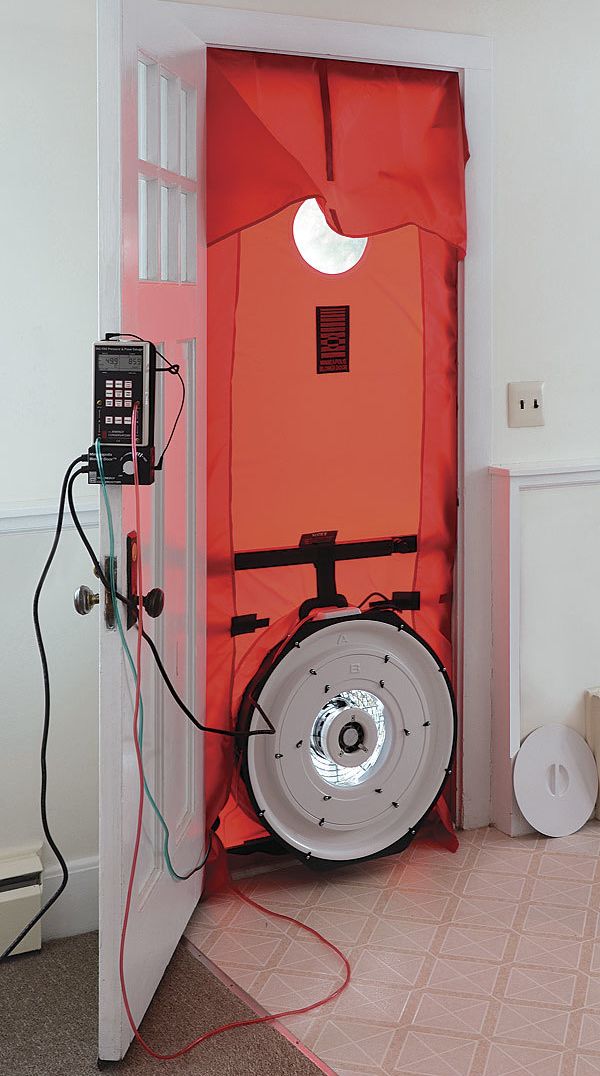Diagnostic Tools for Energy-Minded Remodelers
Applying building science in the field can help to deliver safer, healthier, and more energy-efficient projects.

Synopsis: For most remodeling contractors, a toolkit contains a fairly standard assortment of hand and power tools, but with more homeowners wanting to tighten their houses to save money on utility bills, it might be time to expand those toolkits a bit. Writer Don Jackson offers an overview of the sorts of tools and devices remodeling contractors can add to their arsenals to allow them to have greater success in offering energy-savings updates to existing homes. Among the devices that can be used to chase air leaks, Jackson recommends a blower-door kit, used to depressurize a building to find the source of air leaks; smoke puffers, used to trace air leaks; and thermal imagers, used to determine missing insulation and thermal bridging. The combustion-safety devices Jackson recommends include a gas-leak detector, for checking propane and natural-gas lines; a personal carbon-monoxide monitor; and a combustion analyzer, used to measure the amount of carbon monoxide in the exhaust of natural-draft combustion appliances.
The past several years have seen a flurry of activity on the home-energy front. Federal tax incentives and dozens of rebate programs have focused attention on cutting residential energy consumption. Energy audits are now common in many areas of the country, and building codes have stepped up insulation and air-sealing requirements, and are even beginning to require blower-door testing and duct-testing on new construction. Homeowners are more aware than ever of these trends, with more and more wishing to tighten their houses so that they can save money on their utility bills.
This isn’t unfamiliar territory for remodelers, many of whom already participate in programs that require third-party energy auditors to verify that a project is meeting reduction targets. With most programs, there’s typically a blower-door test before work begins and another one at the end of the job. Unfortunately, when it’s most needed—while workers are opening walls or probing the attic for air leaks—a blower door may not be available, at least not for free. If the goal is to tighten and insulate existing homes well enough to achieve meaningful energy savings, remodelers will need to do their own blower-door tests and thermal imaging. In addition, as long as they work in homes that have combustion appliances, they’re going to have to learn the basics of combustion safety.
An integrated approach
A meaningful commitment to home performance diagnostics—including training and equipment—costs $10,000 to $20,000. Over time, a company’s investment in training—getting BPI (Building Performance Institute) or RESNET (Residential Energy Services Network) certifications, studying thermography, attending conferences for continuing education—will outstrip the cost of the equipment. Will the effort, however, make a meaningful contribution to a remodeler’s bottom line?
”When you’re good at diagnostics, people tend to come to you for all sorts of building performance issues,” says Paul Eldrenkamp, the owner and founder of Byggmeister, a remodeling company in the Boston area. “I recently visited a house that had chronic ice dams. Everybody was looking at the ice as a roofing problem, but I could see that there was a lot of leaky ductwork in the attic.” Eldrenkamp ran pressure tests with the blower door and showed the customer the heat loss using thermal imagery. “From outside, you could see the roof glowing,” he says. “No wonder the snow’s melting and freezing at the eaves.” Byggmeister air-sealed the attic and added insulation. “It became a bigger job from a revenue standpoint, but more important, it provided a long-term solution for the ice dams and addressed high gas bills and comfort issues,” says Eldrenkamp.
Eldrenkamp began to integrate energy diagnostics into his company in 2004 with the purchase of a blower door, which was followed in quick succession by an infrared camera, moisture meters, and data loggers. For a while, Eldrenkamp tried providing energy audits as a sideline to his bustling remodeling business, but he found that it wasn’t worth it. “At that point, you’re really just selling time, not leveraging that time. Unless you turn it into a project, it’s going to be an uphill battle to make money. Plus, you’re competing with all those auditors who are subsidized by utility programs.”
For more on learning energy diagnostics, click the View PDF button below.


























